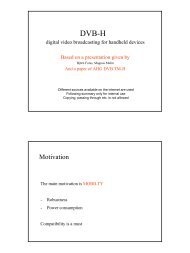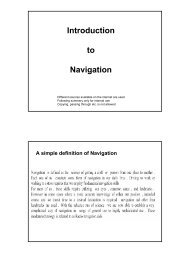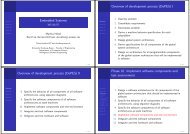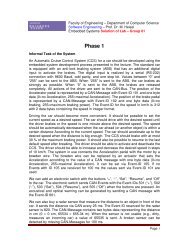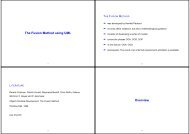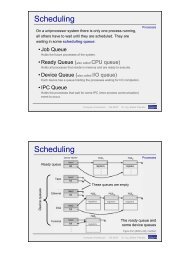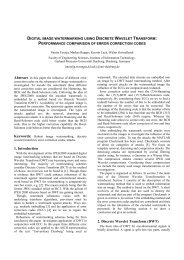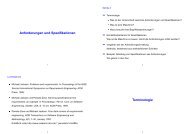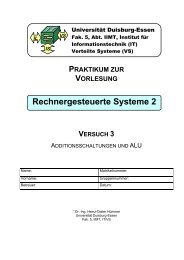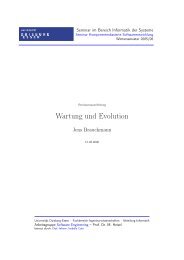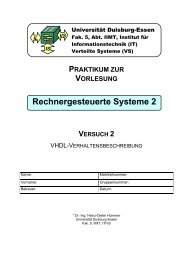Design Patterns
Design Patterns
Design Patterns
You also want an ePaper? Increase the reach of your titles
YUMPU automatically turns print PDFs into web optimized ePapers that Google loves.
EXAMPLE: “COMPOSITE”<br />
Classification object/structural<br />
Intent Compose objects into tree structures to represent part-whole<br />
hierarchies. Composite lets you treat individual objects and compositions<br />
of objects uniformly.<br />
Also Known As —<br />
Motivation Users can build complex diagrams out of simple components by<br />
using graphics applications.<br />
Problem: Code that uses the corresponding classes must treat primitive<br />
and container objects differently, even if most of the time the user treats<br />
them identically. The Composite pattern describes how a recursive<br />
composition can be designed so that the client does not have to distinguish<br />
between primitive objects and containers.<br />
Applicability Use the Composite pattern when<br />
• you want to represent part-whole hierarchies of objects.<br />
29<br />
• you want clients be able to ignore the difference between compositions<br />
of objects and individual objects. Clients will treat all objects in the<br />
composite structure uniformly.<br />
Structure (abstract classes and operations are noted in italics)<br />
Leaf<br />
operation()<br />
Component<br />
operation()<br />
getChild(int)<br />
31<br />
*<br />
Composite<br />
operation()<br />
getChild(int)<br />
children<br />
Example:<br />
aPicture<br />
aPicture aLine aRectangle<br />
aText aLine aRectangle<br />
common operations: draw(), move(), delete(), scale()<br />
Participants<br />
• Component (graphic)<br />
– declares the interface for objects in the composition<br />
30<br />
– implements default behavior for the interface common to all classes,<br />
as appropriate<br />
– declares an interface for accessing and managing its child<br />
components<br />
– (optional) defines an interface for accessing a component’s parent in<br />
the recursive structure, and implements it if that’s appropriate<br />
• Leaf (rectangle, line, text etc.)<br />
– represents leaf objects in the composition. A leaf has no children.<br />
– defines behavior for primitive objects in the composition<br />
32



